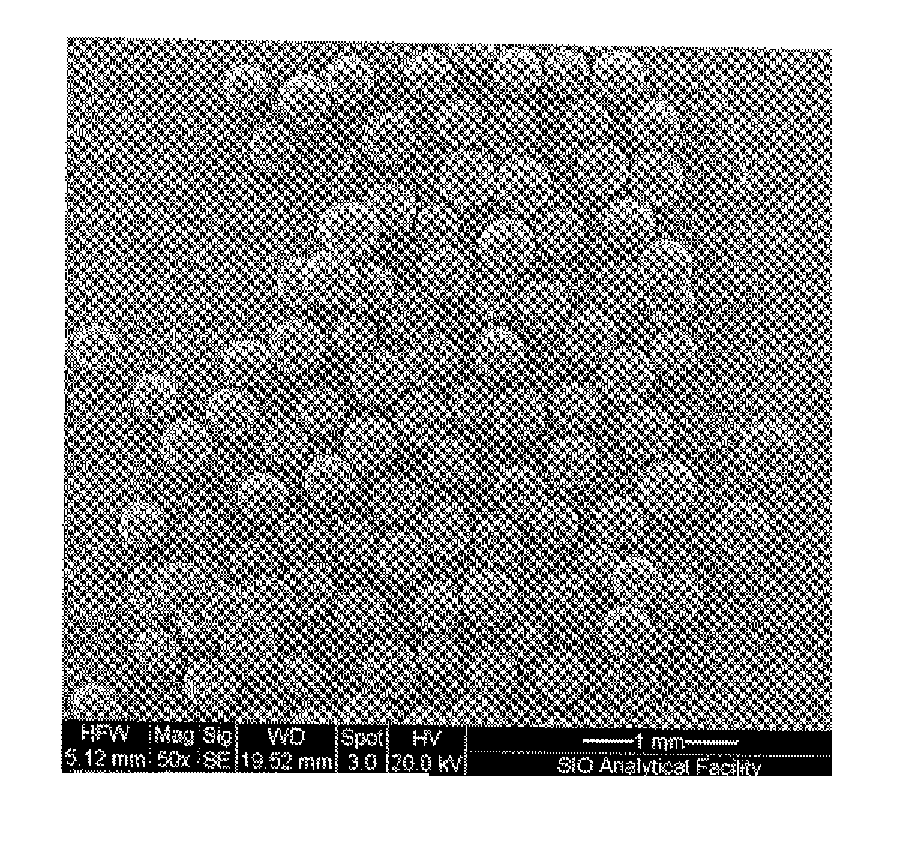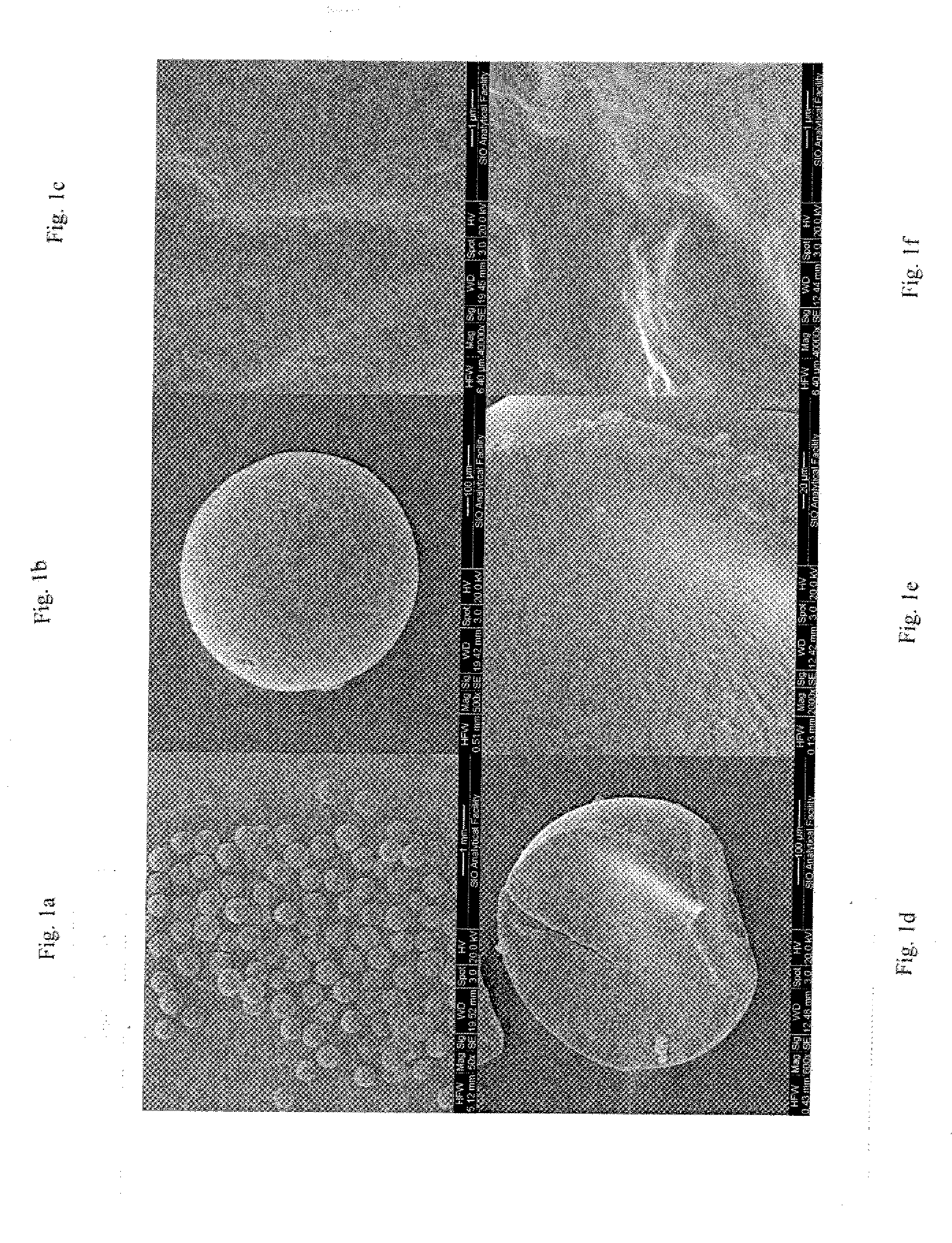Porous intravascular embolization particles and related methods
a technology of intravascular embolization and porous particles, which is applied in the field of porous embolization particles, can solve the problems of non-precise size, unfavorable product shelflife limitation, and high cost of manufacturing dry particles, and achieves the effects of less vascularization, less vascularization, and less vascularization
- Summary
- Abstract
- Description
- Claims
- Application Information
AI Technical Summary
Benefits of technology
Problems solved by technology
Method used
Image
Examples
example 1
Production of Embolization Particles.
[0077] A mixture of 24.0 grams of polyvinyl alcohol and 176.0 grams of deionized water was rapidly heated to 100° C. and held for 12 minutes. Then 150.6 grams of the material was transferred for reaction purposes and set aside and allowed to cool. A separate mixture of 15 grams of rice starch and 135 grams of deionized water was heated to 80° C. and then 48.4 grams of the material was added to the PVA solution and thoroughly mixed. To this mixture 21.7 grams of concentrated hydrochloric acid and 22.0 grams of about 37% formaldehyde (formalin solution) were added to form the reaction PVA mixture. The mixture was then centrifuged at a fast speed (but not so fast that the PVA solution and starch are caused to separate), which, according to one embodiment, is 2,000 rpm with a centrifuge having a 4-inch radius for 8 minutes to remove microbubbles of air trapped in the mixture. The mixture is then added drop-wise to a reactant medium made up of 160 g...
example 2
[0079] In this example, embolization particles were made using a slightly different process. The same procedure as in Example 1 was followed, but the rpm of the PVA reaction medium was increased to 300 rpm. The resulting particles exhibited the same mechanical properties as the spheres in Example 1, but the average size of these particles was smaller than the average size of the Example 1 particles. Without being limited by theory, it is believed based on these results that the rpm of the PVA reaction medium can be manipulated to obtain various desired particle sizes.
example 3
[0080] In this example, embolization particles were made using a slightly different manufacturing process. The same procedure as in Example 1 was followed, except that the mass of the PVA used was 33.52 grams to make a 16% PVA solution (as opposed to a 12% solution in Example 1). The resulting particles exhibited increased firmness and resilience.
PUM
| Property | Measurement | Unit |
|---|---|---|
| diameter | aaaaa | aaaaa |
| diameter | aaaaa | aaaaa |
| diameter | aaaaa | aaaaa |
Abstract
Description
Claims
Application Information
 Login to View More
Login to View More - R&D
- Intellectual Property
- Life Sciences
- Materials
- Tech Scout
- Unparalleled Data Quality
- Higher Quality Content
- 60% Fewer Hallucinations
Browse by: Latest US Patents, China's latest patents, Technical Efficacy Thesaurus, Application Domain, Technology Topic, Popular Technical Reports.
© 2025 PatSnap. All rights reserved.Legal|Privacy policy|Modern Slavery Act Transparency Statement|Sitemap|About US| Contact US: help@patsnap.com



